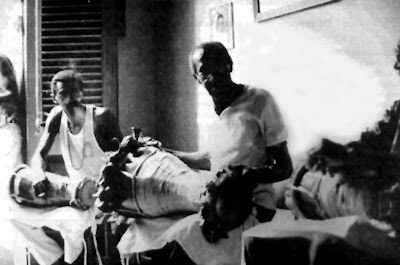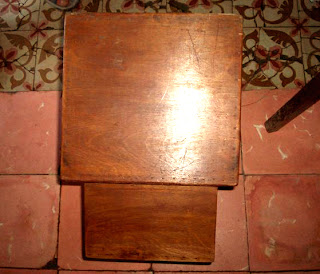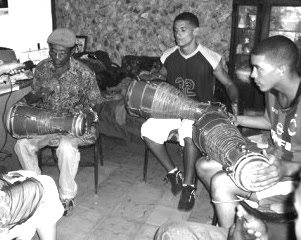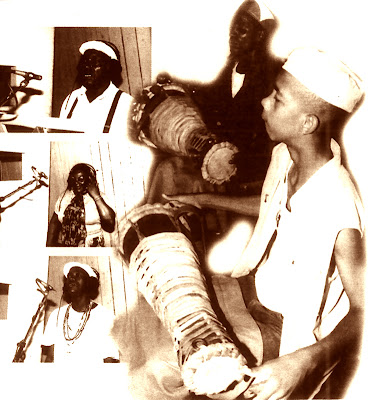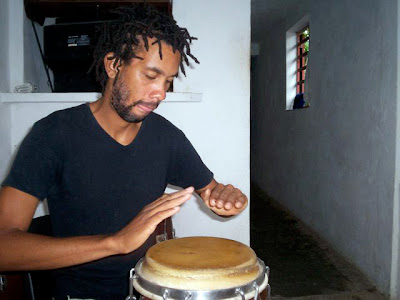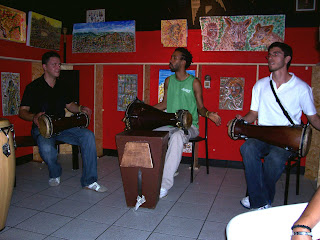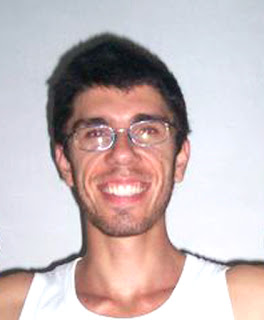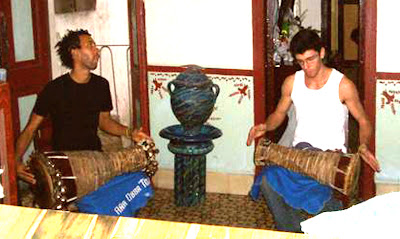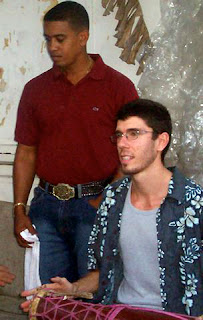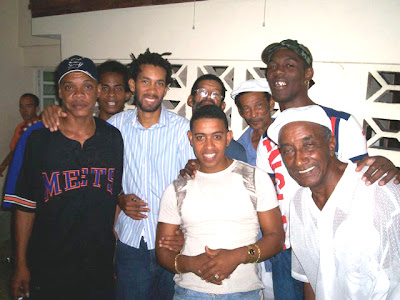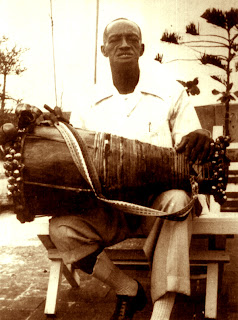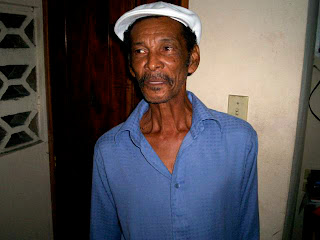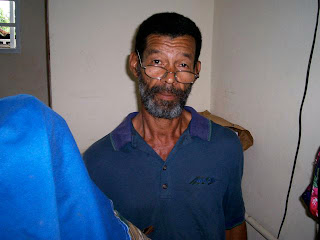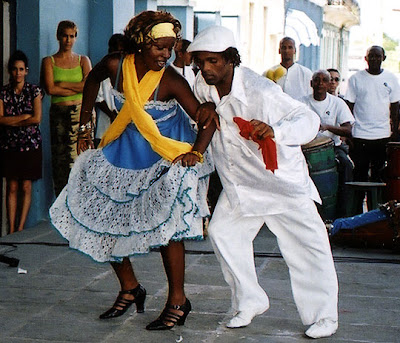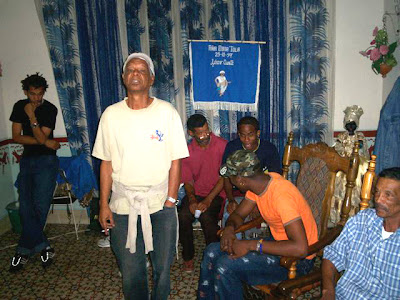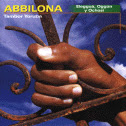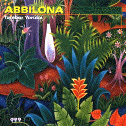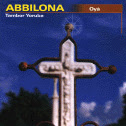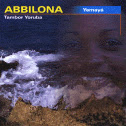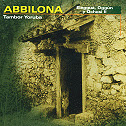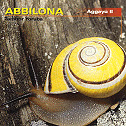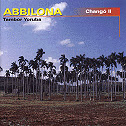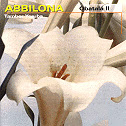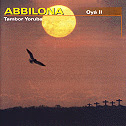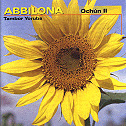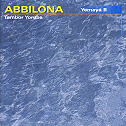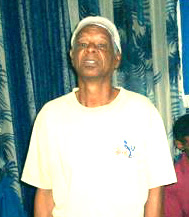
Pedro López, in this interview conducted by Antoine Miniconi, recounts the history of the Chinitos family, of their rumba style, how they learned to play bata drums, and how from the bottom of their barrio San Miguel del Padrón, far from Havana center, they have been thrown up to Havana's afrocuban forescene.
Antoine: "First tell me about yourselves, Los Chinitos, the uncles…"
Pedro: "Well, we have a family tradition: my father and my uncle, they had a sexteto. I hadn't been born yet. My name is Pedro López Rodríguez. Los Chinitos — there aren’t so many of us — they've called us Los Chinitos since we founded this area of la Corea (“Korea”).
So traditionally they got together, on Mother’s Day, New Year’s Eve, Easter, and had parties there, with their son music, but then they used to finish with a rumba, they would play on the cabinet or on the sideboard, or on a little box...and that created among us something that we internalized.
And since then we maintained that every year, with no idea that it would be so valuable in the future, you know? Later, besides that, as time passed we were creating, in the 1970s and 1980s - it was from ‘75, ‘76, more or less that time – we created like a type of polyrhythm.
A friend — who was one of the greatest rumberos in Cuba, they called him "El Llanero," I believe that his last name is Martínez, [Manuel Martínez, b. Havana Jan 01, 1936] he's now living in the United States — pejoratively called what we created "guarapachangueo.”
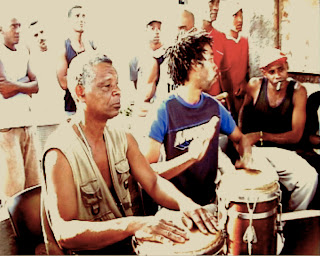
(Pedro and his son Piri)
It was something we started spontaneously for a song, it wasn’t like we made it with the idea that it was going to become so valuable. And so along comes one guy playing on the wall, "tikitin" and the other "tukutum"... And we began with a cajón that goes...a small nightstand, it was my grandmother Mamaíta’s. That small box, we turned it into a quinto, and my uncle had a cajón, that he himself created, of plywood, it had a motor with a helix to pump air, it was a type of ventilator, and so we started with tumbao, sitting on the drawer of the ventilator, and then we changed positions alot, "I’ll go here, you go over there."
We began to do these rumbas, and when everybody got together those days...we played; It was just any old day, and then everybody, “Hey, hey!" my family, everybody, my brother José, and then out of all that came what they call "guarapachangueo.” El Llanero called it that pejoratively, "Look at that, that guarapachangueo they are playing." And from that we created our own style of cajones, which is the true guarapachangueo.
And later, the first conical (inverted pyramid) shaped cajón that was made in Cuba was by a friend, Ifraín Kofá Frioles, who told me: "I am going to make you a cajón that is conical so that it doesn’t slip." He was the first one to make a cajón like that. Thinking of that, I worked on the carpentry with him, and that gave me the skills to later create this."
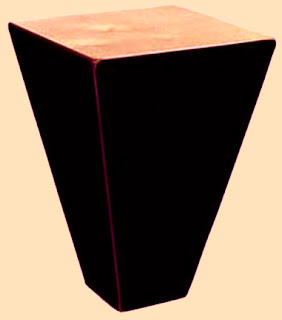
Later, with time, the kids came along. And Piri grew up here with us. And from very small he played already, from four years old already playing anything, he was inclined to that. He was created, from the belly of his mother, he came listening to music: rumba and everything."
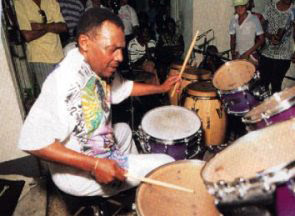
(José Luis Quintana "Changuito")
"We didn't practice anything religious: our thing was rumba, rumba, rumba. Now, later, yes. Already, we were so inclined, when they started Raizes Profunas, to begin the Afrocuban thing, in the 1980s. And then the thing started picking up that energy. I had the luck and the privilege to find one of the first great musicians of Cuba, Changuito (Jose Luis Quintana). It was not an interview, but rather we had a dialogue with him with respect to this new rhythm that had been created. And we would play him something, and then later he told me that he had included it in his drums. Changuito liked it a lot. The guarapachangueo started getting stronger, pickup up steam."

(Pancho Quinto)
"Nowadays, there are many groups that make many things with the guarapachangueo, because it’s a matrix. The guarapachangueo is a matrix. But they have done polyrhythms over that. Like Pancho Quinto, who was first. Pancho Quinto, Maximino [Duquesne]..."
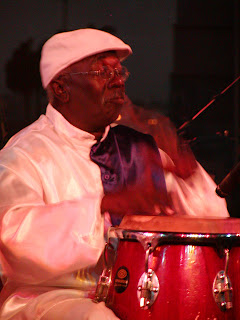
(Maximino Duquesne)
"After the guarapachangueo they made their own creations, their “evolutions," as they say, with respect to this matrix. But we were lucky in that we also shared it with Yoruba Andabo. We participated in parties with them, in rumbas with them. So they always approved. And they gave us the virtue, to support this, for them also to do their things."
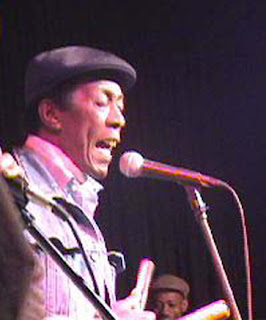
(Juan de Dios Rámos "El Colo")
"But all that was born of the matrix of the guarapachangueo, created by Los Chinitos, that’s ours, with their blessing. And of all the great rumberos: Juan de Dios [Rámos], [Ricardo Gómez] Santa Cruz, Alhambre [Antonio Rivas?], one of the great rumberos here too. We had the luck to find it even in Matanzas, with Los Muñequitos de Matanzas, and even they are using it, they have changed much of its pattern, and they have one of their songs — that I don't remember now — where they do the "tukutum," for the guarapachangueo. [Pedro is possibly referring here to "Vale Todo" from Vacunao (Qbadisc 1995) — Ed.]"

(Los Muñequitos de Matanzas)
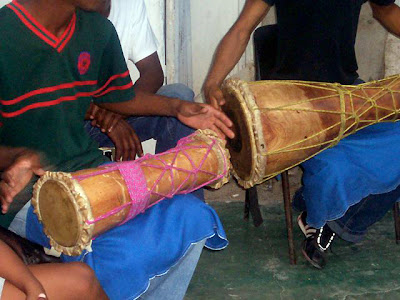
"And so from that point Piri, since he was very little, already played okónkolo in the fundamento, we were with Amador, in the tambor of Pancho Quinto, we were with Roman [Diaz], and later entered the essence of Pedro Aspirina, and Pablo Addé, because Pedro Pablo was the founder of the tambor with Pablo Roche. He began as a boy with Pablo Roche. And then, we were lucky that they assimilated us, by our character, our form, our corrections. Pedro was man of respect, a very serious man. We were lucky to begin with him, and there we learned many golpes, there was the essence of the batá drum, like Angarica, like Jesus Pérez, who he [Pedro?] was a drummer with Jesus Pérez, and Jesus Pérez was a student of Pablo Roche."
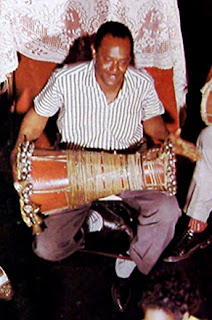
(Jesús Pérez, Photo credits: John Amira)
"Then I have to say that we, and Piri, were lucky when we fell "in the Mafia," with them, I can say that, in the great part of the music of Añá, of the drum. And there’s where it began, it was on fire already.
And then everybody, by hearing... for example Mario Aspirina, Mario Jáuregui, of the same Aspirinas, all of them are from the same family, whom we admired very much, and everything came from, "I’m going this way, look at this, come over here…” I mean to help us, and Piri came burning already, he already played segundo, he knew all the golpes. He was a prodigy, they admired him a lot, and we were lucky.
Everything comes traditionally from us, but nothing of yoruba, our thing was rumba. I have a thesis which says that of all the popular musics that are in Cuba, the most perfect one is rumba.
"They say that the popular one is son. Sure, son is the first along with yambú, and with changüí. I believe the yambú was first."
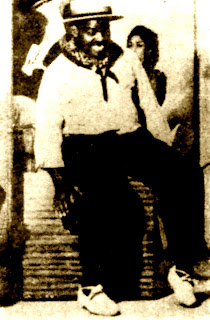
"But that was so far back, I can’t say... but it began with the "tukutum-kutum," and adding to that the marímbula, and later the son, with the septetos and all that, but all that comes from that beginning, that is, first there was rumba and then everything came after that. From the popular one to the folkloric one. I don’t know, there are scientists who study that. But for my thesis, myself, I believe that the most popular music but that there is in Cuba is rumba.
Look, you go to a party, any party. And when the party’s over everybody stays seated and grabs a can, a stick, and they start to play. After the party when the music’s over they start another music, and it ends in rumba. It’s a thesis of mine (...)
So that’s how it started, it’s a family tradition. Later we had luck with Irián, the youngest, and he learned a lot. And after Irián grew up, Piri was always by his side, and he taught him more, Irián taught him so much, they both had fresh minds, without problems, they had everything they needed (to be good musicians). And they were able to apply their skill to that, to Añá. They have always played as a duo."

"In Abbilona, others came to play batá, and Irián said, "No, no. Piri, you play, so that it’s well done." And so Piri played segundo. He put the headphones on and recorded everything in one take.
The first one that came out was made for Pancho Quinto. It was made by Ifraín Kofa Frioles, who left the country. He lived here, and then he went to the US to live, and they killed him there. He was one of the greatest galleros (of cockfighting) in Cuba. He played the roosters in the Club Habana, to get in there and be under 16 years old it was difficult, but he did. Because he was one of the best espueladores and made spurs for the fighting cocks here in Cuba. And he was also a carpenter. He said, "I’m going to you to make a conical cajón that doesn’t slip.” And that cajón is now here in a museum in Cuba, Irián left it after an performance there. So he and no one else here in Cuba started making the conical cajón. (...)"
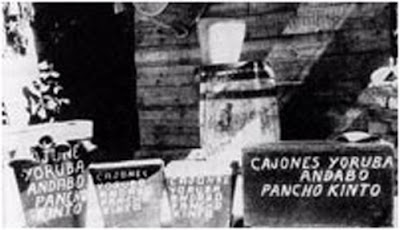
"Nevertheless Yoruba Andabo keeps going, with my brother Bertico, the oldest, who started to work with them, and was a founder of Yoruba Andabó with Pancho Quinto (in 1981?). And who brought the "kinpakin-pakin-patokotón" was Bertico. Chori, and Julio “El Gordo” still do that. So it was Berto who kept that tradition of the guarapachangueo cajón, with Pancho Quinto and his invention with the spoon and the three batá, a very particular style. That was Pancho Quinto, that’s lost already, the guarapachangueo format, that was Pancho Quinto’s thing. But you see, the guarapachangueo comes from here, from la Corea."
Antoine: "They say they had rumbas here every weekend, in that block…?".
Pedro: "Yes, every Sunday...we were in a time, in the decade of the 70s, until 1980 when “the dregs” (la escoria) left...as they say: "the dregs," the people that left the country."
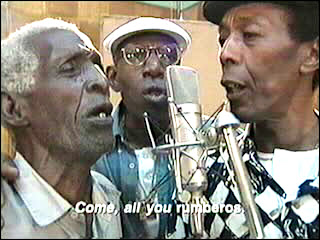
(Chavalonga, El Goyo and Juan de Dios)
We had a rumba here every Sunday until 1980. But we also had them traditionally on Mother’s Day and New Year’s Day, those are the perfect days... We were lucky that many rumberos came here, from Guanabacoa, from Marianao, from everywhere. Because this is a peña, then Juan de Dios Rámos, the director of Raíces Profundas, who was the one who got us into the artistic thing.
He came to look for us, because we happened to be at a rumba in Santos Suárez... He came by and said "Come here, you guys!," and we started to rumba and Juan de Dios came with all the rumberos. It was traditionally every Sunday here. They used to not allow rumbas here - because the problem is that in rumba there are problems of resentments, intrigues, things like that... because rumba is of the low world. Now today with the Revolution things have changed, now everything is a cultural problem, people are educated, rumba is not piñazo(?)... rumba is
something else. Thanks to our process that we have here. From this perspective you have to admire it because there was a lot support for all these traditional things... Earlier, rumba was a galleta(?), a shot... always a problem. But nowadays with the process that we have there’s no problem...everything’s changed.

("Los Tíos": Reynaldo, Irián, Berto López)
So we maintained this tradition of Mother’s Day and New Year’s Day. Of course there are times when things get complicated because of problems of drums, to go to a toque, a religious ceremony, that they booked us for a tambor for X santo, or X deity. And sometimes they come on January 1st, like last year, Mario "Chavalonga" Dreke, who is also a man of respect in the Cuban rumba... came all "jodido," 80-some years old... "Chinitos, I’ve come to rumba with you for awhile here." So we had to please him, we had a commitment, we were exhausted, and we had a tremendous rumba!
But this area (la Corea), you know it's isolated, and was very difficult to get here. If we were
more in the center... Los Chinitos would have been the first that all Cuba heard about. And today, look, they are going to make like a "Buenavista Social Club," they are going to do this in January now, and they came to get me here, and want me to play guarapachangueo. (Argeliers) Leó(n) came and it said to me, "Look, Pedro, you are he the one who has to go, because they want to get all the creators together... Some guys came from some country, of the culture and all that... they want to do just like they did with Buenavista Social Club, reunite to all the great soneros, all the great ones...I hope so! If I can’t go, I’ll send Piri.
And so, well, there are many things to tell... but I don’t have much... The truth is that the guarapachangueo is from here, Piri was born here, and I always taught him everything as if he were my son, he was born with me and I always taught to him to be very modest, everybody knows him here...
Then Piri was with "Aspirinas in Guaguancó", a group of aficionados over there, of the Aspirinas. The group was strong, it started well but, I don’t know what the problem was, I don’t know happened, the group broke up. They went to France and everything, then later I don’t know what happened.
So, later Juan de Dios sent for Piri to join Raices Profundas. He didn’t go to the audition, Juan de Dios said, "I need Piri here", and Piri joined the group, and now he's a a key member in Raices Profundas with Eduardo (?), Cusito (Jesus Lorenzo Peñalver), with all great ones they have. But Piri has a lot of potential, and I hope he’s going to be great too. Because he plays many things: not only batá, he is a rumbero, he plays Palo, he plays a ton of popular things, and he still has many fields to seed. The rest is time and being modest, you have to be very modest in this. Look, I do this from the heart and I show you who I am with my hands, but what I have here inside is what I am going to show you. That is what goes to the spectator, to the public, you know? It’s better."
(Originally posted by Antoine Miniconi and par Patrice Banchereau - english translation Barry Cox)
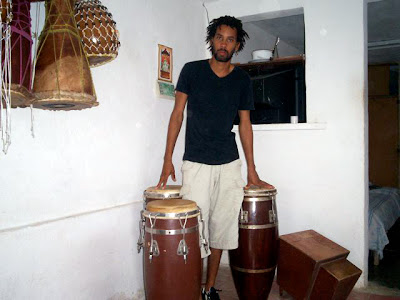 Manley "Pirí" López Herrera
Manley "Pirí" López Herrera 
